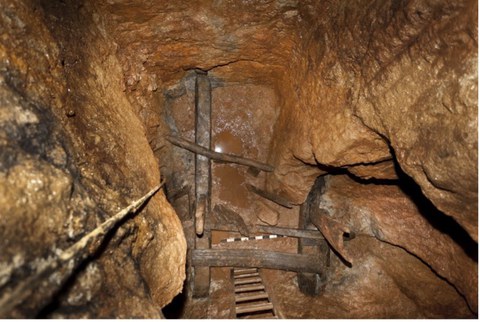Oct 13, 2025
The 'underground forest' of Dippoldiswalde reveals medieval forest history

Wooden winch Dippoldiswalde
The medieval silver rush not only transformed Europe’s mining towns, it also reshaped the surrounding forests. In a new study led by Grit Neubauer, published in Dendrochronologia, more than 2,000 exceptionally well-preserved wooden finds from the medieval silver mines of Dippoldiswalde in the Erzgebirge were analyzed.
Dendrochronological dating of over 1,100 timbers revealed that mining activities spanned from the late 12th to the 13th century. At first, miners harvested the surrounding primeval Fagus–Abies forests, offering a rare glimpse into their original composition. Yet within just a century, the enormous demand for timber in mining, settlement, and ore processing led to widespread deforestation and a marked shift towards coniferous and pioneer species such as spruce and pine.
The study demonstrates how archaeological wood archives can serve as a unique source for reconstructing forest history. It highlights the profound ecological footprint of medieval mining and the potential of large-scale dendro-datasets for advancing environmental history.
The full paper is available here.
